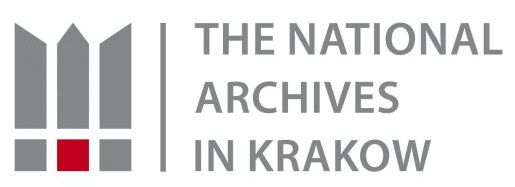A MODERN TOWN
From the events of the Royal Free Town of Podgórze 1784–1915
Imperial orders guaranteed the inhabitants of Podgórze the freedom of religious practice. Catholics, Evangelists and followers of the religion of Moses lived beside one another, with equal rights to participate in public life. Podgórze, unlike other towns in Galicia, did not have a separate Jewish area.
Joseph's universal announced the construction of a temple and the establishment of a Catholic parish. Initially, the residents of Podgórze attended the Church of Saint Bartlomiej in Ludwinow. They received their own parish in 1818 together with a chapel in the Oekonomie Gebaeude government building. The first classic church of Saint Joseph in Podgórze Market Square was established in 1832, but it did not fully satisfy the needs of the parishioners. It quickly turned out that it was too small for the needs of the rapidly developing society, and it was also incorrectly constructed. The poor technical condition of the building forced the town leaders to demolish it in 1905. Construction of a new place of worship was entrusted to an architect from Lwów, Jan Sas Zubrzycki, using his previously unused design for the Church of the Holiest Saviour in Warsaw. The monumental, Neo-Gothic construction, which captivated with its size and numerous references to European art, was consecrated on 24 October 1909.
In 1900, the Redemptorists arrived in Podgórze, attempting to inject Marian devotions into the working-class society exposed to non-clerical influence. In 1903, on Mickiewicza Street (currently Zamoyskiego) a monastery was built following the design of Gabriel Niewiadomski, whereas in 1906 the Church of Our Mother of Perpetual Help, the design of Jan Sas Zubrzycki, was consecrated.
At the end of the 18th century, in the south-eastern part of Lasota Hill, a necropolis was established with the aim of serving the Christian residents of the town. The cemetery became the place of burial for the most notable residents of Podgórze. When it became full, it was closed in 1900 and replaced with a new cemetery, located by Wapienna Street, near Krakus Mound.
The first Evangelist house of prayer was recorded in 1786. The church together with the cemetery was located in the quarter divided by the current streets of Limanowskiego – Krakusa – Rękawka – św. Benedykta. In 1816, the Senate of the Free Town of Kraków granted Protestants the Church of Saint Martin. Transfer of the mass to Kraków led to the liquidation of the church and Evangelist cemetery in Podgórze.
The Jewish Qahal in Podgórze was established in 1891, previously believers of the Moses religion had belonged to the Klasno Qahal. In 1888, on Jerozolimska Street, a Jewish cemetery was established, and in the 1890s a bath house was built. Jews in Podgórze did not have their own synagogue, although they planned to construct one. They gathered for worship in private homes specially designated for this purpose. In addition to charity activities, religious-charity associations also ran their own temples, such as the Bet ha-midrasz Chasidim Society of Prayer and Support that managed Zucker Temple at 5 Węgierska Street.
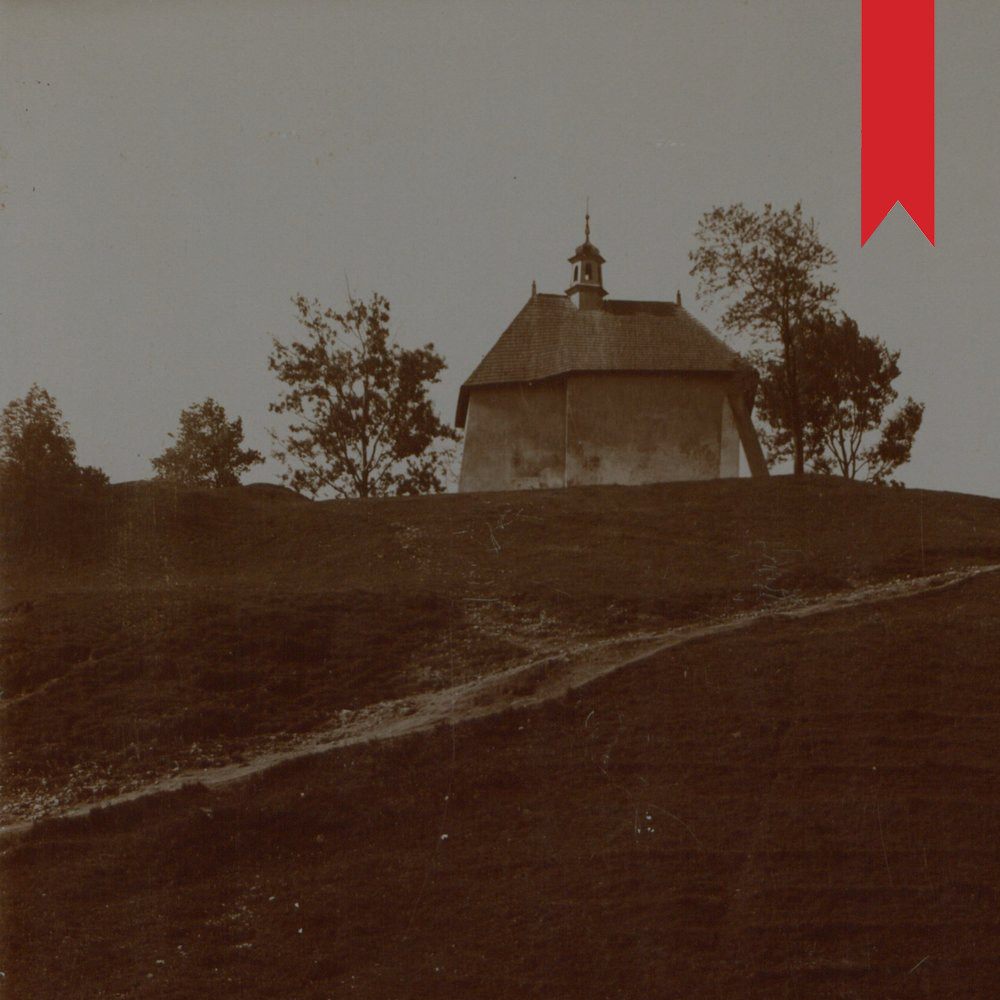
The Church of Saint Benedict on Lasota Hill – the oldest temple in the area of Podgórze, noted in 1254 as the property of the Norbertines. From the end of the 16th century, it belonged to the Monastery of the Holy Spirit, whereas in the 19th century it moved under the care of the Podgórze parish. At the foot of the temple, there was the “Under Benedict” quarry, from which raw materials were acquired even in the 19th century. By the church on the first Tuesday after Easter, the traditional Rękawka festival was held
(ANK, ref. no. A-IV-33)
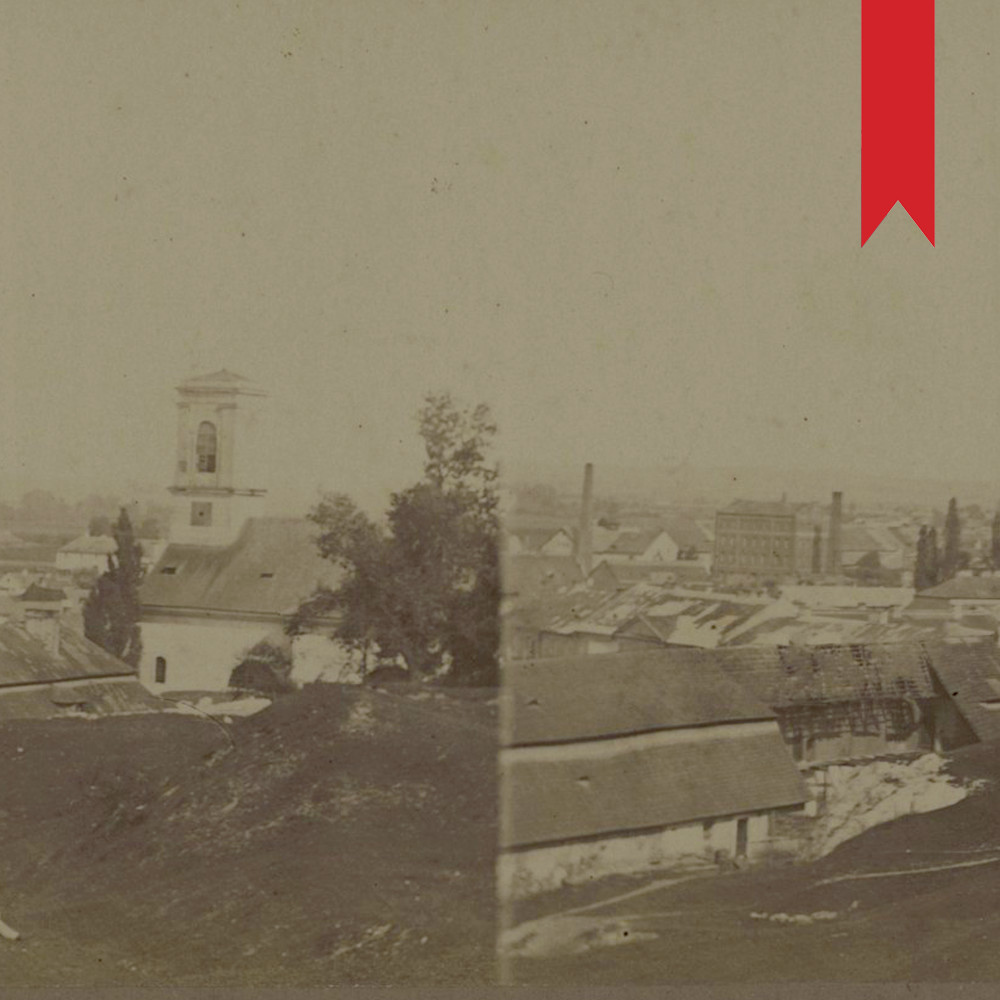
View of Podgórze from Krzemionki, on the left is the tower of the first Church of Saint Joseph in Podgórze Market Square, undated
(ANK, ref. no. A-III-573)
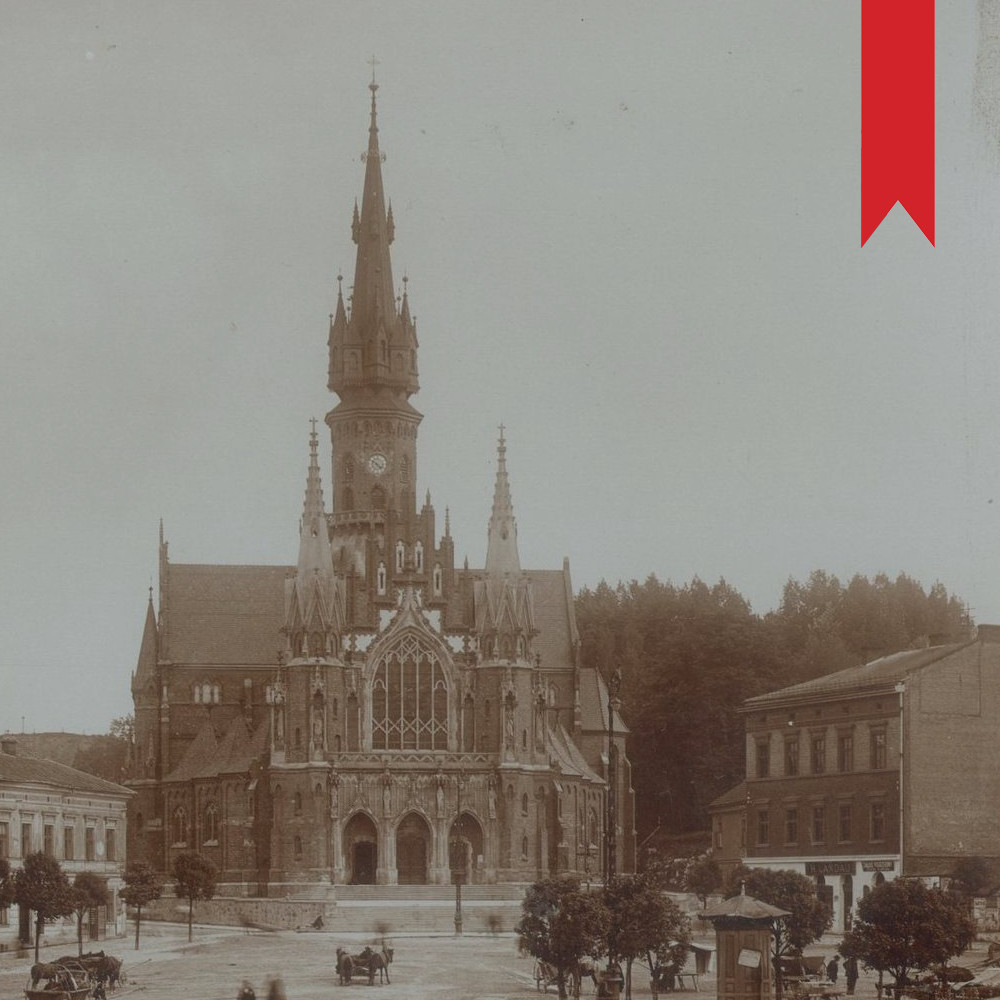
The second Church of Saint Joseph on Podgórze Market Square, undated
(ANK, ref. no. A-IV-601)
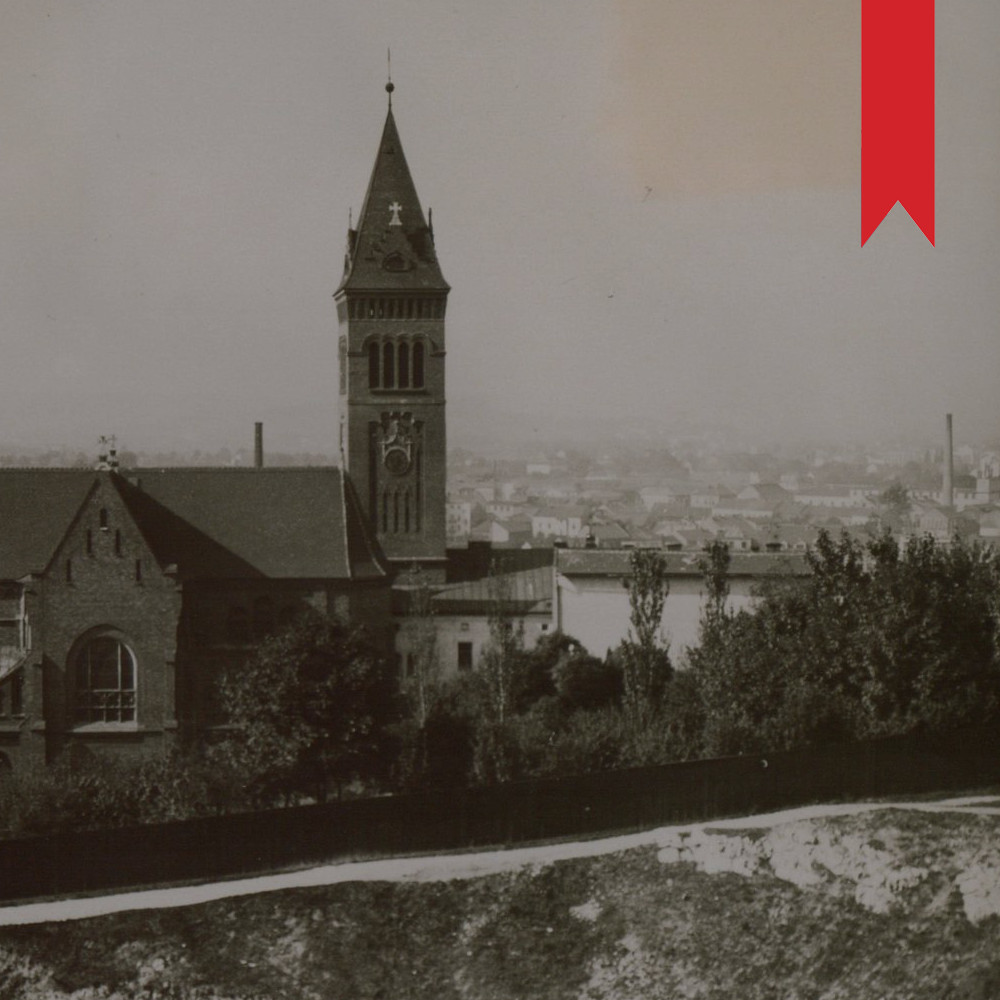
Church of Our Mother of Perpetual Help of the Redemptorists in Podgórze, 1927
(ANK, ref. no. A-III-1034)
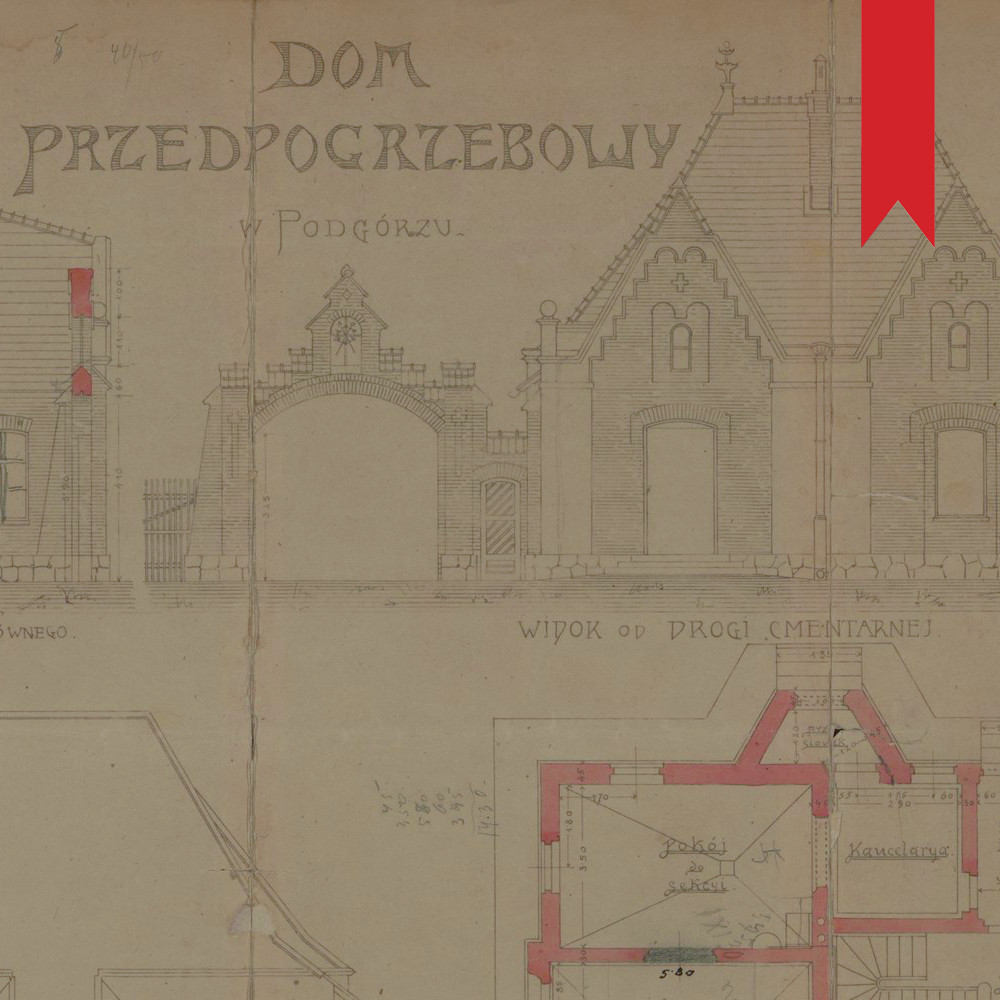
Plan of the Funeral Home in the new cemetery in Podgórze, designed by Józef Kryłowski, 1904
(ANK, ref. no. Kr 7771, p. 345)
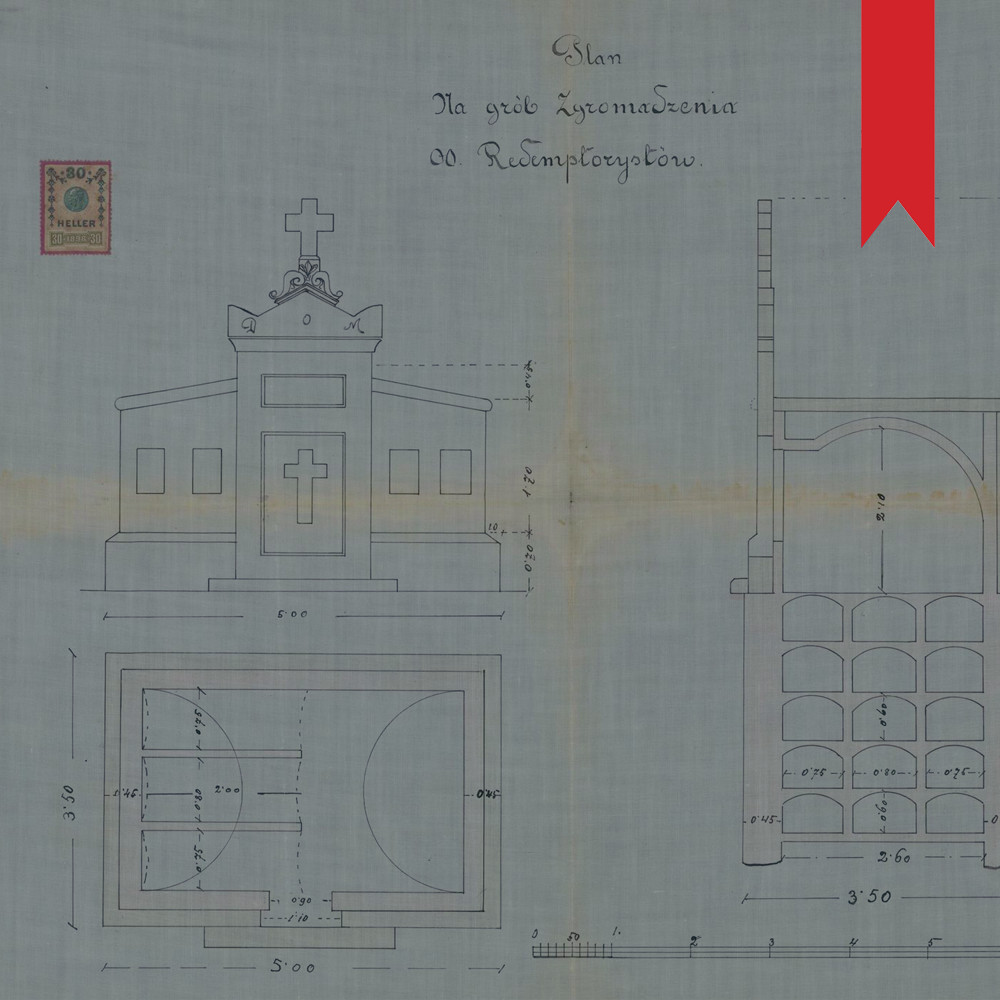
Plan of the tomb of the Redemptorists in the new cemetery in Podgórze, 1908
(ANK, ref. no. Kr 7771, p. 1465)
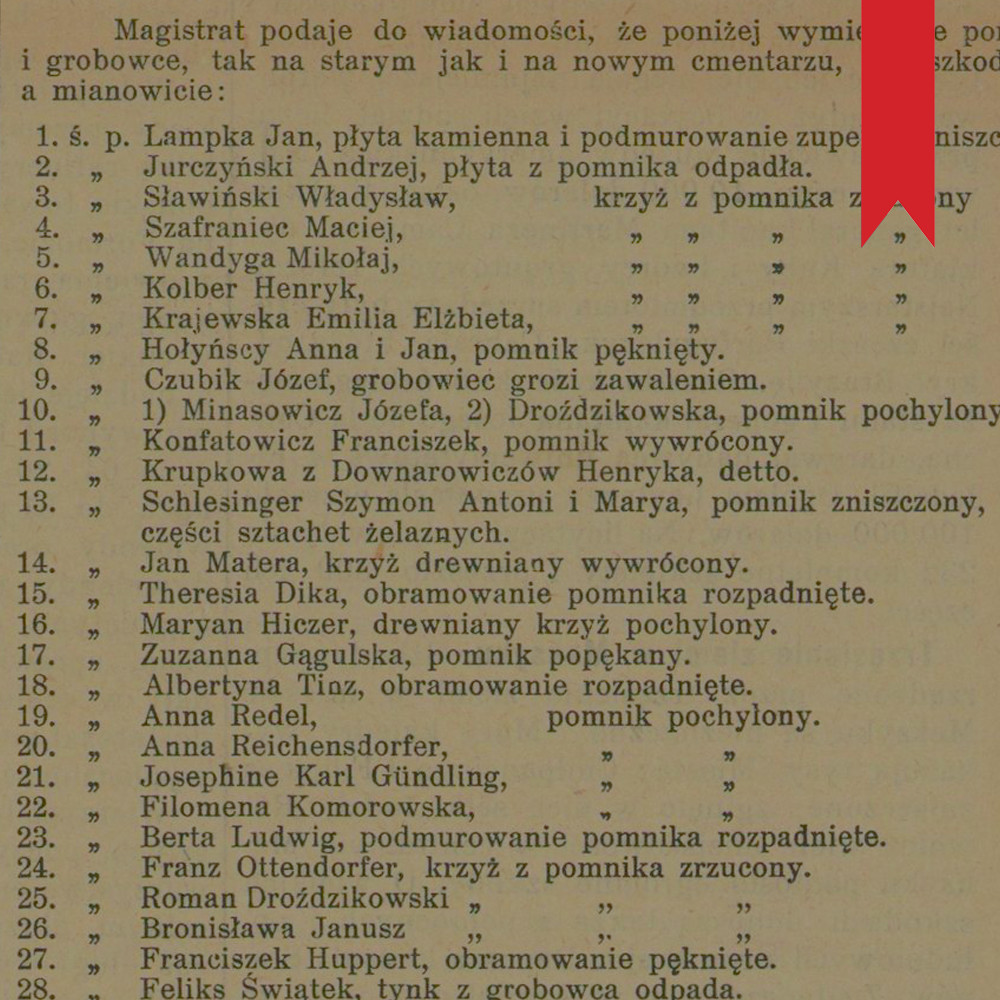
Announcement of the mayor of Podgórze from 31 July 1909 concerning the duty to renovate damaged gravestones in Podgórze's cemeteries, 1909
(ANK, ref. no. Kr 7771, p. 1436)
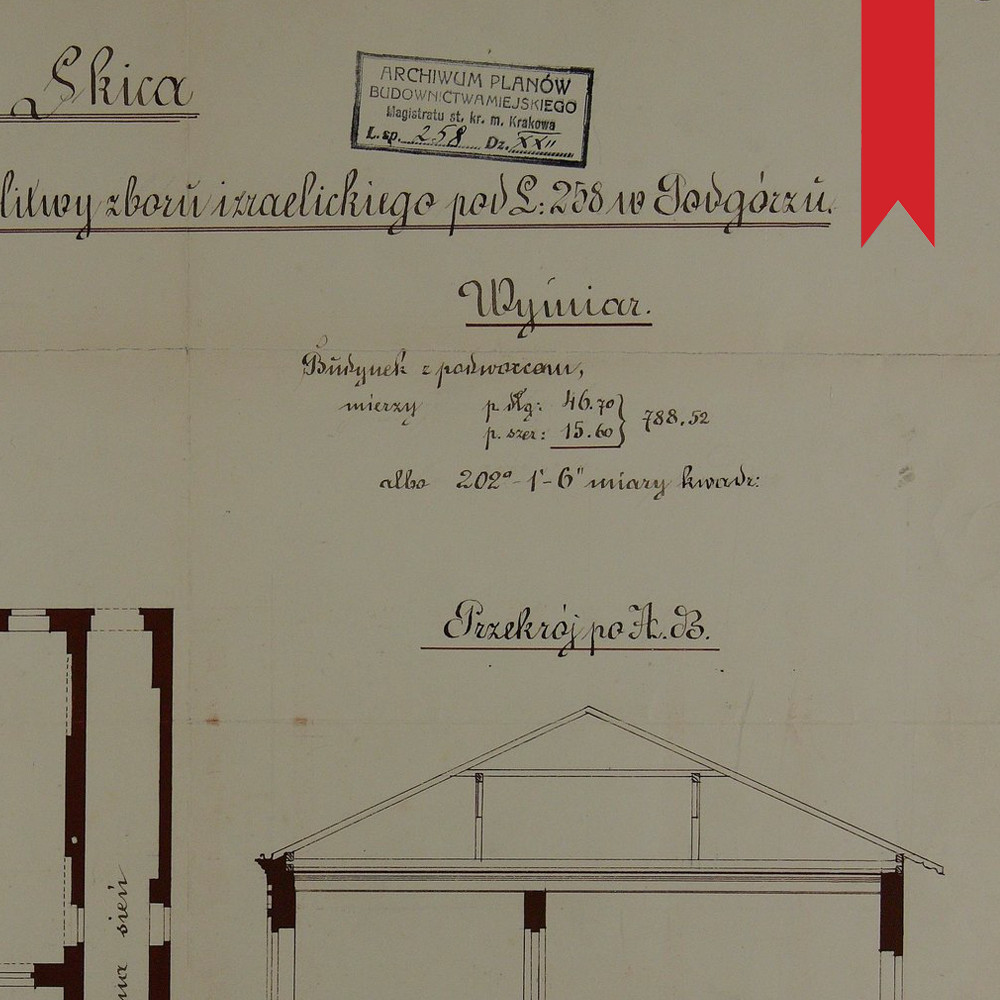
Plan of the house of prayer for the Israelite church in Podgórze, 1881
(ANK, ref. no. ABM ul. Węgierska 5, f. 968, pl. 2)
